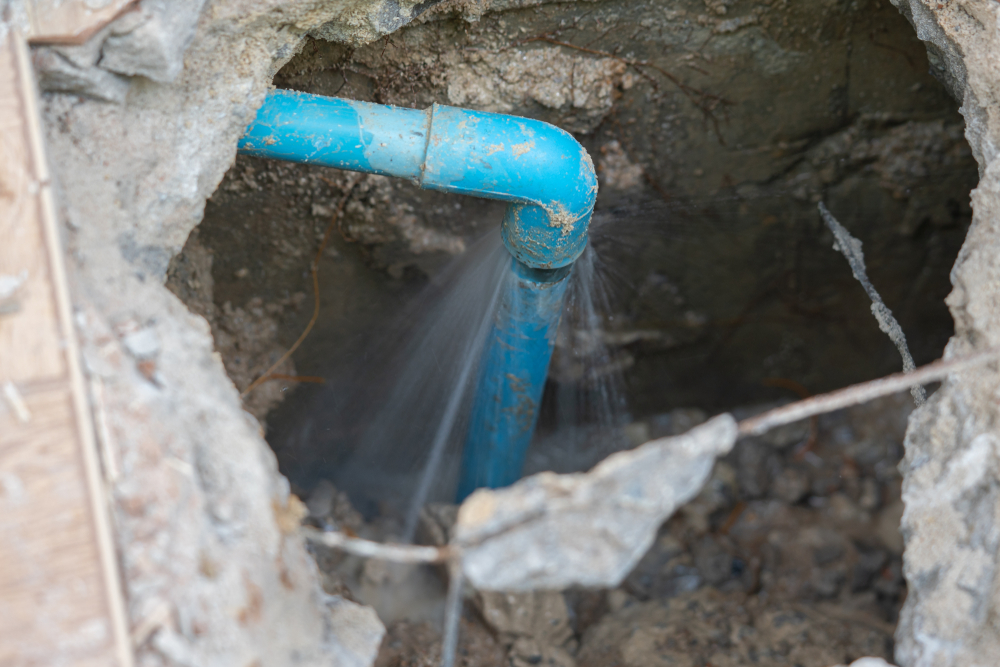How to Find as well as Repair Water Leaks-- A Comprehensive Guide
How to Find as well as Repair Water Leaks-- A Comprehensive Guide
Blog Article
This post which follows relating to Finding hidden leaks is without a doubt fascinating. Don't miss it.

Early detection of leaking water lines can reduce a prospective catastrophe. Some small water leaks may not be visible.
1. Analyze the Water Meter
Every residence has a water meter. Checking it is a surefire way that helps you discover leaks. For beginners, turn off all the water resources. Make certain nobody will purge, utilize the faucet, shower, run the cleaning machine or dish washer. From there, go to the meter and watch if it will certainly change. Given that no one is utilizing it, there should be no motions. That shows a fast-moving leak if it moves. If you discover no adjustments, wait an hour or 2 as well as inspect back again. This indicates you may have a slow-moving leak that could also be underground.
2. Inspect Water Consumption
If you detect abrupt adjustments, regardless of your intake being the very same, it suggests that you have leaks in your plumbing system. An unexpected spike in your expense suggests a fast-moving leak.
A consistent boost every month, even with the very same behaviors, reveals you have a slow-moving leak that's also slowly rising. Call a plumber to extensively inspect your property, specifically if you really feel a warm area on your flooring with piping beneath.
3. Do a Food Coloring Test
When it comes to water intake, 30% comes from bathrooms. If the color somehow infiltrates your dish during that time without flushing, there's a leakage between the container as well as bowl.
4. Asses Outside Lines
Don't fail to remember to examine your outdoor water lines as well. Needs to water seep out of the link, you have a loosened rubber gasket. One tiny leak can waste heaps of water as well as spike your water bill.
5. Analyze the situation and also evaluate
Homeowners need to make it a behavior to inspect under the sink counters as well as also inside closets for any kind of bad odor or mold and mildew growth. These 2 warnings suggest a leak so punctual attention is called for. Doing regular evaluations, also bi-annually, can save you from a major problem.
Much more significantly, if you recognize your residence is currently old, maintain a watchful eye on your heating systems, pipes, pipelines and so on. Check for stainings as well as deteriorating as a lot of pipes as well as devices have a life span. They will certainly also normally deteriorate due to tear and use. If you believe dripping water lines in your plumbing system, don't await it to intensify. Call a specialist plumber right away so you don't end up with a horrible mess in your house.
Early discovery of dripping water lines can alleviate a prospective disaster. Some small water leaks might not be noticeable. Inspecting it is a surefire method that aids you find leakages. One tiny leakage can squander lots of water and also surge your water costs.
If you suspect leaking water lines in your plumbing system, do not wait for it to escalate.
WARNING SIGNS OF WATER LEAKAGE BEHIND THE WALL
PERSISTENT MUSTY ODORS
As water slowly drips from a leaky pipe inside the wall, flooring and sheetrock stay damp and develop an odor similar to wet cardboard. It generates a musty smell that can help you find hidden leaks.
MOLD IN UNUSUAL AREAS
Mold usually grows in wet areas like kitchens, baths and laundry rooms. If you spot the stuff on walls or baseboards in other rooms of the house, it’s a good indicator of undetected water leaks.
STAINS THAT GROW
When mold thrives around a leaky pipe, it sometimes takes hold on the inside surface of the affected wall. A growing stain on otherwise clean sheetrock is often your sign of a hidden plumbing problem.
PEELING OR BUBBLING WALLPAPER / PAINT
This clue is easy to miss in rooms that don’t get much use. When you see wallpaper separating along seams or paint bubbling or flaking off the wall, blame sheetrock that stays wet because of an undetected leak.
BUCKLED CEILINGS AND STAINED FLOORS
If ceilings or floors in bathrooms, kitchens or laundry areas develop structural problems, don’t rule out constant damp inside the walls. Wet sheetrock can affect adjacent framing, flooring and ceilings.
https://www.servicemasterbyzaba.com/blog/how-to-detect-water-leakage-in-walls/

We had been shown that editorial about Hacks to detect leaks from someone on our other domain. If you enjoyed reading our post kindly don't forget to share it. I treasure reading our article about Hacks to detect leaks.
Report this page